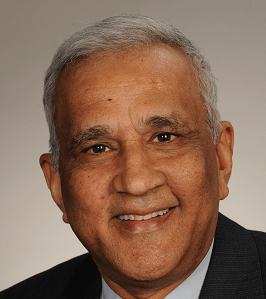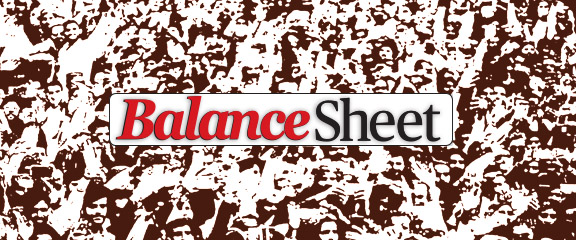A well-known demographer, Kingsley Davis, held three traits responsible for the destruction of ancient cities — too many people, constant in-migration and concentration of wealth. He had warned in the early 1950s, that if modern cities were unable to address these three traits, they would soon encounter the spread of disease, environmental depletion and street violence through internal conflicts, leading to death and destruction. Kingsley Davis’ prediction seems to be partly true for Karachi, which has gained notoriety during the past 40 years for its rapid growth, ethnic strife and periodic violence. Karachi already has too many people and is one of the fastest growing cities due to constant in-migration from other parts of the country. Besides, while on the one hand, over half of the population lives in dilapidated housing, lacking civic amenities, there is concentration of wealth among less than 5 percent of the population, who live in posh areas and enjoy all the luxuries of life.
Ethnic strife and violence in Karachi are about four decades old, as even after the mass migration of refugees from India in 1947, when the whole subcontinent was in the grip of communal riots, no such incidents were reported from Karachi, a city as much divided on religious lines as Calcutta and Delhi. Thus, during the 1950s and ‘60s, no street violence was reported from Karachi, as evidenced in many other cities around the world, such as Chicago, Paris and Bangkok.
Since the shifting of Pakistan’s capital from Karachi to Islamabad, the tussle to hold the reins of Karachi has been on, with ethnic tensions dominating the wide range of conflicts. Consequently, in the 1964 elections, out of 16 administrative Divisions in the then West Pakistan, Karachi was the only Division where an overwhelming electorate voted against General Ayub Khan’s election as President. For doing so, Karachiites were penalised with the first ethnic riots in the city, in 1964, between, Mohajirs and Pashtuns, who were encouraged to settle in Karachi by subsequent Commissioners of Karachi, who were also from the North West Frontier Province.
The repercussions of cultural and linguistic polarisation in Karachi were again reflected in the first general elections held in 1970, when the electorate supported mainly the two religious political parties and overwhelmingly voted against the Pakistan People’s Party (PPP). Once in power, PPP tried to isolate the Mohajirs from the mainstream, declaring that since the residents of urban areas of Sindh (a majority of them were Urdu speaking Mohajirs) were over-represented in civil bureaucracy as well as in nationalised industries and banks, therefore, in all new appointments, preference was to be given to those from rural areas of the province. Thus, for the first time in Sindh province, an urban-rural quota system was introduced in the 1973 constitution, initially for 10 years, but it remains in force till the present day. Besides, Sindhi was declared the official language of Sindh. This move was resisted by the Urdu speaking population, leading to language riots in Karachi, and many people lost their lives.
Following the Soviet occupation of Afghanistan in 1979, out of about five million Afghan refugees who came to Pakistan, many were allowed to settle in Karachi and operate public transport. Afghan and Pashtun drivers of minibuses, in connivance with the traffic police, operated vehicles without driving licenses and were known for rash driving. Consequently, an Urdu speaking college student — Bushra Zaidi — while crossing the street was crushed to death by a presumably Pashtun minibus driver, who disappeared from the scene leaving the vehicle behind. The vehicle was set on fire by a mob that had assembled there. This incident led to ethnic tension between Pashtuns and Mohajirs. Besides, Afghans, concentrated in Sohrab Goth, introduced the gun and drug culture to the city. When police action was taken against the drug mafia, they chose to take revenge from the residents of nearby Aligarh Colony and Orangi Town, resulting in casualties among Urdu speaking people living there. According to police records, during the next decade, over 9,000 people were killed in Karachi. About 29,000 four-wheelers and over 100,000 two-wheelers were stolen, and there were 100 cases of bank robberies.

The riots and conflict of the mid-1980s coupled with continued negligence of Karachi by the federal as well provincial governments, led to the emergence of the Mohajir Qaumi Movement (MQM). After sweeping the 1989 elections, it took the form of a fascist party and ruled Karachi with an iron hand for the next 30 years, dividing the city on ethnic lines. After the military action against the MQM in the early 1990s, violence in Karachi reached its peak. According to police records, the number of murders increased from an average of 406 per year during 1991-93 to 1,113 in 1994. During the same period, the number of attempted murders increased from an average of 710 per year to 1,070. The situation further deteriorated in 1995, when the total number of murders exceeded 2,000. Another revealing fact was that murders were reported from all areas of Karachi and most of them were committed on the streets. About 80 per cent of the victims were in the age group of 15-40 years and were mostly male. Afterwards, when MQM became a partner in the coalition government, the situation improved. However, violence on the street continued during the first decade of this century.
The violence matrix of Karachi is not about law and order alone. The law and order situation is apparently a by-product of the demographic convulsions the city has been experiencing since the early 1960s, with too many people moving to the city from all over the country. Most of the city’s population has been deprived of basic civic amenities, a phenomenon identified by this author in the mid-1980s, which led to widespread riots. Since then, violence has continued in Karachi which has been often mentioned as one of the most violent cities of comparable size in South Asia by key international newspapers and magazines. According to one estimate, there were a significant number of lethal weapons, many of them unlicensed and illegally held in Karachi, which was one of the major factors behind homicide and injuries. In 2001, the murder rate in Karachi was 4 per 100,000 people and between 1994 and 2004, there were 8,816 casualties reported through incidents of violence, including murders, torture by non-state actors, kidnappings for ransom, vigilante reprisals, bombings and suicide attacks. Lately, low intensity violence has carried on without a gap. Life in Karachi gets a jolt only when killing, crime and violence cross a certain limit.
An operation by the Pakistan Army against the Taliban in the valley of Swat during 2007-09 resulted in internal displacement of many people. Thousands left their homes and Karachi, which was already home to some millions of Pashtuns, was the obvious choice for them to settle in. This trend gained momentum in 2009, when the military operation reached South Waziristan, Mohmand Agency, Bajaur and Dir, This author and Huma Baqai in a recent article point out that this unchecked migration to Karachi from the North along with that of Afghan refugees has led to the spread of Tehreek-e-Taliban Pakistan (TTP) in Karachi, establishing themselves as the new entrants to the club of Karachi conflict stakeholders. The TTP found Karachi ideal for rest and recuperation and also started using the city’s resources to fund its pursuits. This continued unabated till they enveloped the city, using the shield of Mohajir-Pashtun conflict to their advantage, to a point where they controlled parts of Karachi and were held responsible for most of the terrorist attacks in the city. In the beginning, the TTP wanted to blend in with the local Pashtun population, so they cut their trademark long hair, shaved their beards and worked as petty labourers. Gradually understanding the politico-ethnic-religious nexus of violence in Karachi, the TTP started carrying out its war in the city, which provided them with the perfect cover. During 2010-11, the TTP employed a covert strategy and worked under the cover of political and religious parties to escape the attention of law enforcement agencies. In areas under their control, the TTP started levying a tax on residents and businesses and dug deep into the areas populated by Pashtuns, creating virtual “no-go-areas,” and terrorising the local population.
It appears that after the operation clean-up by the security agencies in Karachi, the Talibanisation of Karachi has perhaps died down. However, despite these successes, religious militancy in Karachi is deeply entrenched and has many manifestations. This politico-religious configuration gives militants the operational space that cannot be addressed by security agencies alone. The security agencies have done the ground work which has pushed TTP to a position of weakness, but given the sympathy they enjoy among a segment of Pashtuns living in katchi abadis of Karachi, especially those who are young and mostly belonging to the have-not category, on the one hand, and with a deep rooted fundamental religious belief on the other, the non-state actors can reorganise any time in the future.
The situation remained volatile till about eight years ago, when a prestigious US magazine, Foreign Policy, termed Karachi “the most dangerous megacity” in the world. It cited a murder rate of 12.3 per 100,000 residents, which was about 25 percent higher than any other major city in the world. Further, it reported that, “from 2000 to 2010, Karachi’s population grew more than 80 percent. That’s roughly equivalent to adding more than New York City’s entire population in just a decade.” Another story stated, “with a population of more than 20 million people, Karachi has areas that are controlled by terrorist organisations, mainly the Taliban. The military and police force, which have lost many of their own colleagues, have really started to crack down on crime there. However, an article posted by Reuters mentions that in August 2015, “murders have decreased by 50 percent over the past 12 months.” Although calm has prevailed on Karachi’s streets since then, violence can erupt any time.
Ethnic tensions in Karachi can only be reduced if people from different communities are made to understand that violence can only lead to further violence, death and destruction in each other’s families. There is a need to send constant messages to the people, which would help them understand each other’s cultural sensitivities. In this respect, TV can play a major role. However, most messages can only be delivered at the personal level. There is a need for frequent interactions between the grassroots leaders of different ethnic groups. When they sit together, they will realise that they have more things in common than the apparent differences. In this connection, the elected councillors can play a very vital role. They should try to bring leaders from each community together, besides arranging for get-togethers of families. Exclusive carnivals can also be arranged for women and children at frequent intervals, where people from different communities should be encouraged to participate. If children living in different communities interact at an early age with each other, they will be more sensitive to each other’s feelings when they grow older. Such activities will also help in easing tensions, which at many times could be due to the lack of recreational facilities in low income areas.
These changes are however, only possible through rational thinking and action. Only Karachiites themselves, being the most educated people in the country can try to save their city from violence and destruction. For the purpose, concerted efforts as well as financial support are needed. If the government is indeed interested in seeing that Quaid-e-Azam’s dream of people in Pakistan living in harmony with each other is realised, then a beginning has to be made somewhere. And no other place deserves that more than the Quaid’s city itself. It is impossible to believe that there are no groups of people who are willing to come forward from a city of over 25 million souls, to champion the cause of the poor and the downtrodden on the one hand, and encourage people from different communities to live in peace and harmony on the other.

The writer is a Distinguished Senior Fellow at the School of Public Policy, George Mason University, United States.



